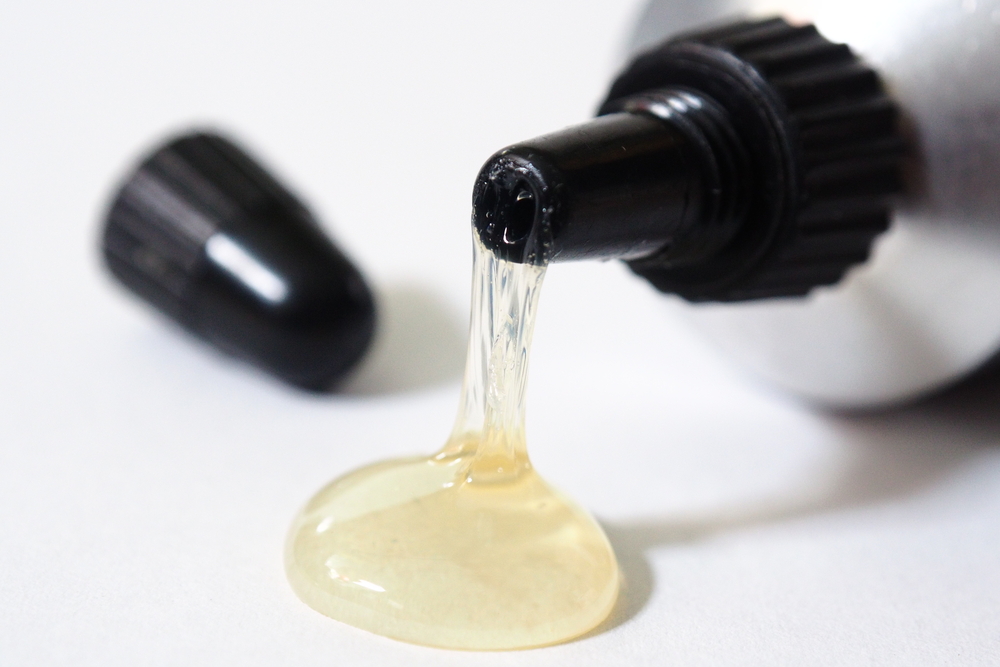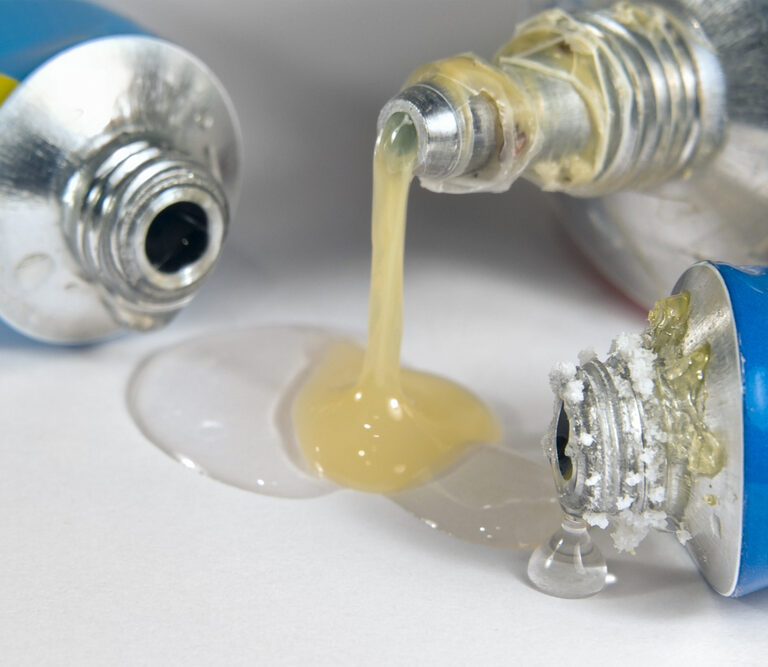There are many types of adhesive on the market, and because they all have slightly different properties, removing adhesive from plastic can be a pain. Fear not, whether you’re looking to rid the residual adhesive left by a sticker or seeking to take out a stronger adhesive, we’re here to help you get it off without damaging your plastic.
What You Will Need
First things first, you’ll need to make sure you have the following supplies to hand.
- Cotton swabs or cotton balls
- Plastic wrap
- Tape
- A >microfiber cloth
- Protective gloves (optional)
- At least one of the cleaning products we’re about to cover
Using Household Supplies
If you’re looking to remove adhesive from plastic, you may already have the right stuff for the job. Many common household supplies work surprisingly effectively at removing adhesive from plastic.
Before you get started with any of the below, you’ll want to keep reading for our step-by-step process.
Dish Soap
Dish soap and warm water is a gentle yet effective solution for removing light adhesive from plastic. This is ideal for removing sticker or tape residue. If possible, let the plastic soak in the solution for 20 to 30 minutes to soften the adhesive before removal.
Vinegar
Vinegar is one of the most common and versatile household supplies in the world. Not only is it a natural and non-toxic cleaner that’s safe for virtually all surfaces, but it can help remove adhesive without damaging the plastic.
Cooking Oil
Oils are another great way to loosen the bonds of adhesive from plastic. Vegetable oil, olive oil, canola oil – any kind of cooking oil works.
Peanut Butter or Mayonnaise
These common sandwich condiments are a tasty way to remove adhesive. That’s because they both contain oils that can help break the adhesive bond with plastic. Mayonnaise also contains vinegar, so on top of the oil, the acid from the vinegar can further break down adhesive bonds.
These are good solutions for plastics that you can’t easily soak. They also stick to the surface you’re trying to remove adhesive from, allowing you to work on vertical surfaces without having to secure an oil-soaked rag or cotton ball over the adhesive.
Alcohol
Alcohol is another great way to remove adhesive. An accessible solvent that’s safe for many uses, alcohol is effective at breaking the bonds between adhesive and plastic. You can use either rubbing alcohol or grain alcohol, both of which are common household products.
Acetone
Acetone, the most common type of nail polish remover, is another way to help remove adhesive. This skin-safe solvent works like other solvents to break the bond between the adhesive and plastic.
However, you’ll want to handle it carefully, as it can discolor or damage some surfaces. It’s also commonly used to thin lacquer, so as always, test it on a small inconspicuous area before going all out with it.
Commercial Cleaners
If household products aren’t cutting it, then you might want to opt for a commercial cleaner. These cleaners utilize chemicals specifically formulated for removing adhesives. They also list instructions and suitable materials to use them on, taking some of the guesswork out of the removal process.

Goo Gone
Goo Gone is a commercial degreaser that works exceptionally well at removing adhesive and other sticky substances. It’s also safe for virtually any surface, meaning it shouldn’t damage or stain the plastic you’re removing adhesive from.
Un-Du
Another great commercial cleaner is un-du. This stuff is specially formulated to neutralize adhesives and makes light work of stubborn solvents. It also comes with a nifty little plastic scraping tool to help pull up the stubborn adhesive.
The original formula uses n-heptane as a solvent, which is a volatile organic compound (VOC). This means it cannot be sold in California due to legal regulations. However, the company also offers a low-VOC formula that can be sold everywhere.
WD-40
Okay, so WD-40 isn’t a cleaning solution, per se. However, it is a solvent that’s gentle enough to use on plastic and can help break the bonds of the adhesive.
As with other solvents, be sure to test it on the plastic to ensure it won’t cause damage. While you can safely use WD-40 on most plastics, it can damage polycarbonate and clear polystyrene plastics.
If you’re worried WD-40 might damage your plastic, then you might try the WD-40 Silicone Specialist Spray, a silicone-based formula that is specially designed to prevent plastic damage.
How to Remove Adhesive From Plastic: 7 Steps
Once you get your cleaning supplies together, it’s time to remove the adhesive from the plastic. The general process outlined below will apply to most solutions, but be sure to check the specific instructions if you’re using a specialist removal product or lubricant like Goo Gone, Un-du, or WD-40.
1. Protection
To start, first put on a pair of gloves to protect your skin from irritation if you’re using acids like vinegar, or solvents like acetone or WD-40.
2. Patch Test
Next, test the cleaning solution on an inconspicuous area of the plastic to ensure it won’t cause any undesirable damage.
3. Initial Coat
Once you’ve determined your cleaner won’t damage the plastic, generously coat the adhesive with your chosen removal product with a cotton swab. If you’re removing a strong adhesive, you may need to soak a cotton ball or microfiber cloth and hold it against the adhesive with plastic wrap and tape.
4. Leave to Soak
Allow the solution to sit on the adhesive for a little while. Inert substances like dish soap or oil will take some time to work, so you’ll want to soak the area with the solution for a while. More caustic substances and solvents, like alcohol and acetone, tend to work more quickly and may damage the plastic from prolonged exposure.
5. Check
After letting the solution sit for a bit, check to see if the adhesive has softened. Once the adhesive is soft, use a dry microfiber cloth to buff away the adhesive.
6. Reapply (if Needed)
As the surface dries, you may need to apply more solution to fully remove the adhesive. Repeat this process as many times as necessary, and if a more gentle solution doesn’t work, you may want to step it up to a stronger solution like acetone or a commercial cleaner.
7. Add Heat (if Needed)
If the adhesive is stubborn, you may try adding heat to the mix by using a hairdryer. This will further help loosen the grip the adhesive has on the plastic. However, exercise caution when doing this, as too much heat can melt the plastic.
Wrapping Up
With the right products, some light scrubbing, and a little persistence, you can remove adhesive from any surface, including plastic. Just remember to follow the proper precautions, and make sure to first test the solution on a small portion of the plastic to avoid any unwanted damage.
